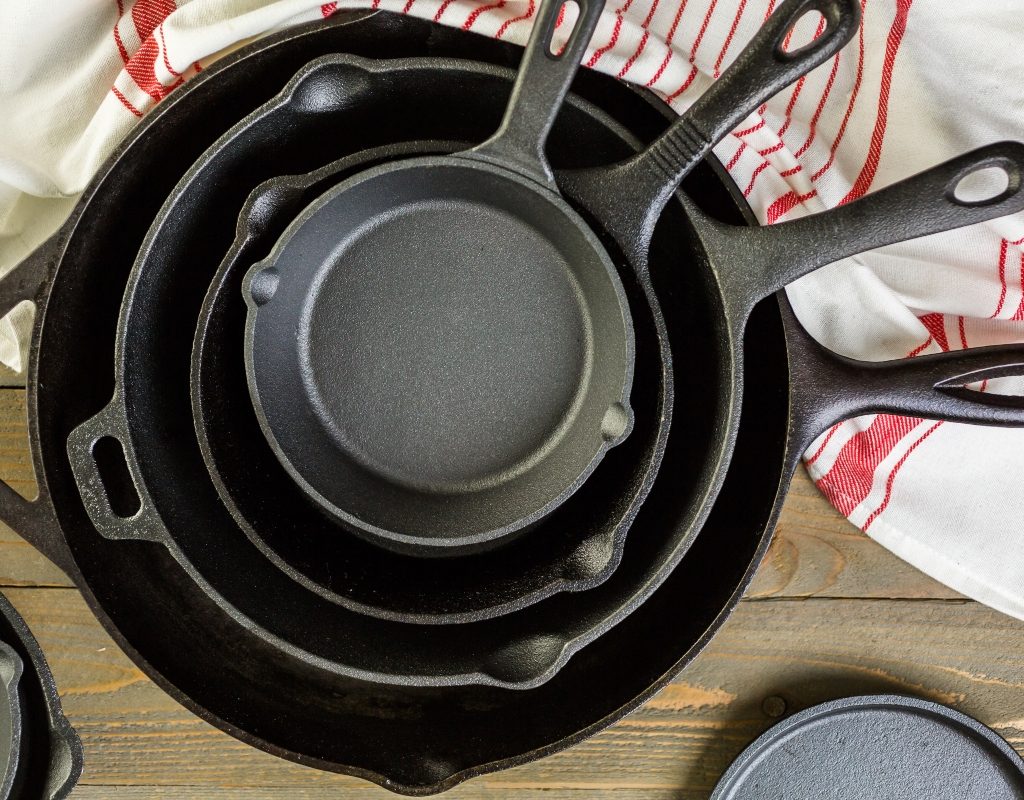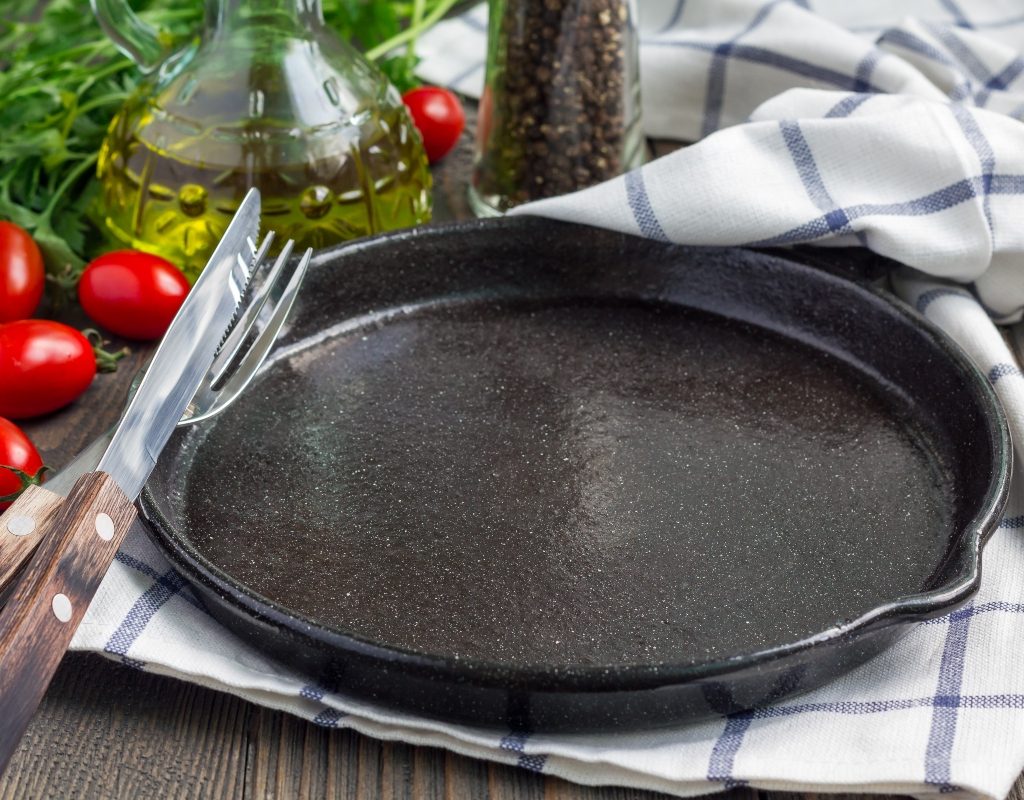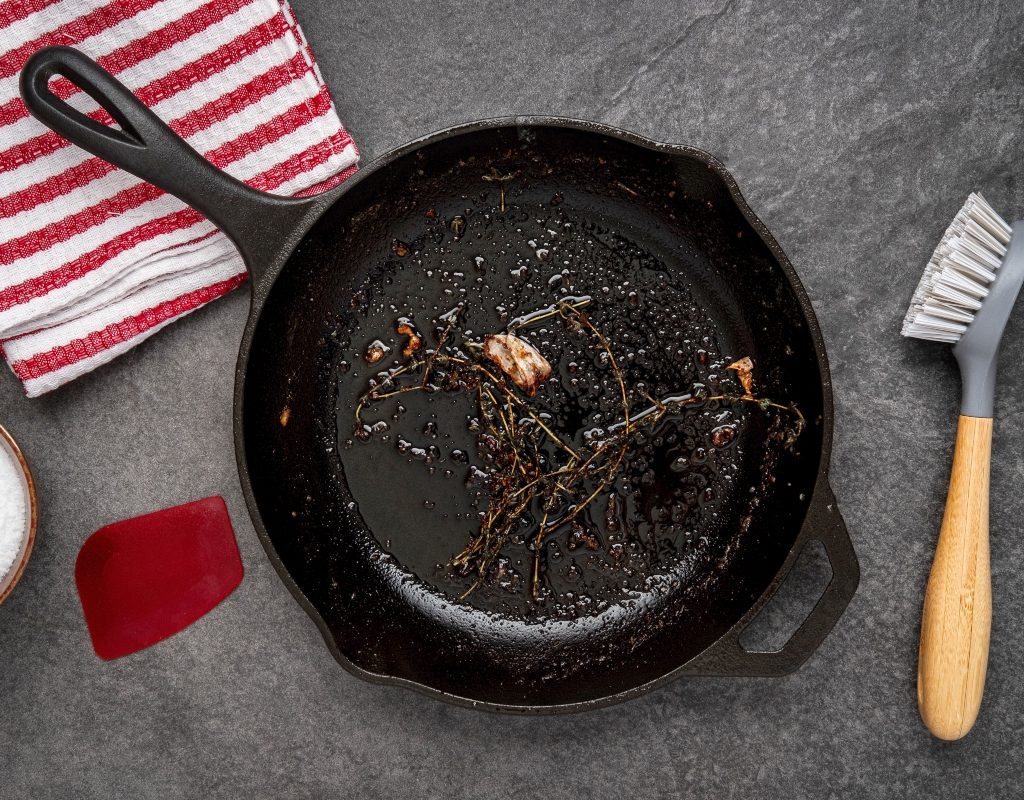Cast iron pans are one of the most versatile tools for any kitchen. You can bake, fry, braise, roast, and broil several dishes in these hardy pans without the fear of damaging the material. Moreover, cast iron pans are durable enough to be passed down through the generations. With proper care and seasoning, your cast iron pan can withstand lifetimes of delicious meals.
If you have a cast iron pan and want to know the best cleaning and seasoning methods to increase longevity, we’ve gathered some of the best tips for you in this guide.

How to use cast iron pans in your kitchen
Cast iron pans are a multifaceted tool for any kitchen. They can be used on nearly any heat source: induction or gas stovetop, portable burner, or oven. These pans are versatile and withstanding, making them perfect for curating any number of delicious dishes.
One of the best things about cast iron is its ability to retain and distribute heat efficiently. Additionally, you can use metal tools on a cast iron pan as there is no chemical coating that could be damaged.
Seasoning your cast iron helps to create a non-stick element when cooking. Since there is no additional coating with cast iron, it’s important to reseason your pan now and again when you notice foods are beginning to stick. Seasoning your pan will also make cleaning it less stressful and more effective as the natural oils coating the pan will allow you to remove food residue with greater ease.

How to reseason your cast iron pan
Since reseasoning your cast iron pan is vital for preserving its longevity, you should aim to do so when you notice food beginning to stick during cooking.
To reseason your pan, you’ll need a neutral oil like vegetable oil, shortening, or canola oil. Using a cloth or towel, rub the inside and outside of the pan with neutral oil. Next, you’ll want to set your oven to 350 degrees. Once the oven has reached the temperature, place your cast iron inside and leave it for approximately one hour.
This is the easiest way to season your cast iron pan. The oil will bake and create an even coating on the cast iron that will act as a non-stick surface when you need to use the pan later on.
How to clean your cast iron pan
There are several ways to clean a cast iron pan. One method is to use salt to help remove food residue. Once your cast iron pan has cooled, lightly dust salt over the stuck-on food and use a dry towel to scrub the leftover mess. The coarse salt lifts the food particles as you scrub. Once finished, you can use oil to recoat the pan.
Hot water is another excellent way to clean cast iron. If you find food particles are not coming off with the salt scrub, you can run the pan under hot water to remove any stuck-on food residue.
Despite what you may have heard, you can also use soap and water to clean your cast iron pan. A small dose of gentle dish soap won’t ruin your pan. However, you may need to reseason your pan after using this method. An important thing to remember if you are using hot water is to dry your pan thoroughly. We have the best practices for drying cast iron listed below.

The best way to dry your cast iron pan
Drying your cast iron pan properly is the best way to preserve its longevity. If you don’t dry your cast iron the right way, you risk the pan rusting.
You should always avoid drip drying, using a dishwasher, and leaving your pan to sit while wet. Instead, follow the below steps to dry your cast iron in a way that makes it long-lasting and effective.
Once your pan has been run through water, you’ll need to ensure that it is thoroughly dried before storing it away. Wipe off excess water with a towel, and then place your cast iron on the stove or in the oven. If you are using the stove, allow the pan to heat up and do not remove it from the stovetop until all of the water has evaporated.
When using the oven, set the temperature to 350 degrees and leave the pan inside until all water has evaporated. It’s important to remember to season your pan after washing it with water or any soap that may have stripped away the coating of the neutral oils.
Cast iron pans are a wonderful addition to any kitchen, but it’s important to provide them with special treatment to ensure that they remain long-lasting and effective. Be sure to follow the recommended steps for cleaning and seasoning your pan to prevent rust. Doing so will allow you to make one delicious meal after another that is sure to delight your family for generations to come!



